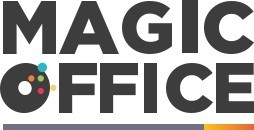
The role of the UK Debt Management Office (DMO)
Understanding the role of the DMO
The UK Debt Management Office (DMO) is instrumental in ensuring the financial stability of the government by managing the nation's debt. It's an executive agency established in 1998, reporting directly to HM Treasury. Tasked with carrying out the government's debt management policy, the DMO's primary objective is to minimize the cost of meeting the government's financing needs over the long term, taking into account risk.
One of the primary duties of the DMO is to issue gilts—government bonds that are used to raise money. In its simplest form, investors lend money to the government, which in turn promises to pay back the principal amount with interest on specified dates. This process is crucial for maintaining liquidity in the public sector and ensuring that the government can meet its cash requirements without causing significant disruption to the financial markets.
The UK Government's Public Works Loan Board (PWLB) is also managed by the DMO, providing loans to local authorities and other public sector organizations. This helps to finance capital projects like infrastructure improvements, which foster economic growth.
To highlight the effectiveness of the DMO, the agency's operations have helped in significantly reducing the national debt over the years. For instance, through effective treasury management techniques, the debt-to-GDP ratio was maintained at a manageable level even during times of economic crisis.
In 2022, Robert Stheeman, the Chief Executive of the DMO, underscored the importance of maintaining a robust relationship with investors and the Bank of England to ensure the seamless execution of government borrowing operations. This was evidenced by the successful issuance of gilts even amid the financial uncertainties posed by Brexit and the COVID-19 pandemic.
The DMO operates transparently, releasing detailed reports and accounts annually. According to the latest report, the DMO's efforts contributed to net cash flows that supported government spending without resorting to excessive borrowing.
Key figures and leadership at the DMO
Key figures in UK's Debt Management Office
The UK Debt Management Office (DMO) plays a crucial role in managing the country's debt, tightened up by a strong leadership team dedicated to prudent financial management. Leading the DMO is Chief Executive Robert Stheeman, who has held his role since 2003. His vast experience and strategic oversight have been instrumental in ensuring the effective implementation of the DMO's policy objectives.
Crucial data and milestones
As of 2022, the DMO's major achievements include maintaining low borrowing costs for the UK government, minimizing long-term financial risks, and supporting a stable and resilient financial market. In fiscal year 2021-2022, the DMO raised £486.2 billion through the issuance of gilts and treasury bills, a record amount aimed at supporting government spending during the COVID-19 pandemic (source: DMO annual report 2021-2022).
Leadership insights
The insights provided by Robert Stheeman are invaluable. He commented in an interview, "Our primary goal is to ensure that the government's financing needs and those of its Exchequer are met in a way that lowest borrowing costs for the taxpayer over the long term." This succinctly captures the DMO's mission, focusing on sustainable debt management and financial prudence.
Organisational structure
The DMO is an executive agency of HM Treasury, consisting of professionals specializing in finance, risk management, and market operations. This structure ensures a strategic and cohesive approach to debt management. The close relationship with HM Treasury allows it to align its activities with broader government fiscal policies.
For more on the role and functions of the Debt Management Office, visit this in-depth blog post.
The process of issuing gilts
How gilts are issued
The process through which the UK Debt Management Office (DMO) issues government bonds, or gilts, is a meticulously planned and transparent operation, aligning with the overall objectives of national debt management. The DMO follows a structured approach to ensure that the issuance meets the needs of both the government and investors.
Primary issuance and auctions
Most gilts are issued via auctions, where primary dealers, known as Gilt-edged Market Makers (GEMMs), bid for new bonds. In 2022 alone, these primary auctions raised over £180 billion, highlighting their importance. Auctions are conducted using various methods, including competitive and non-competitive bids, to ensure wider participation and fair pricing.
According to data from the DMO, in 2021, the UK government issued 57 different gilts, with maturity periods ranging from a few months to over 50 years. This diverse range ensures that both short-term and long-term funding needs are met.
Role of the Bank of England
The Bank of England plays a crucial role in this process by acting as an advisor and agent for the DMO. Their function includes the settlement of bonds and, in times of market stress, participation as a bidder to ensure the stability of auction outcomes.
Syndicated offerings
Occasionally, the DMO uses syndicated offerings for issuing gilts, particularly for larger or more complex instruments, such as inflation-linked bonds. This method involves a group of banks underwriting and distributing the gilts, providing immediate liquidity and often attracting a broader investor base.
Types of gilts
There are several types of gilts, each serving unique purposes:
- Conventional gilts: These are the standard fixed-rate bonds, making up the majority of UK government debt.
- Index-linked gilts: These bonds' returns are adjusted based on inflation, protecting investors against eroding purchasing power.
Secondary markets and liquidity
After issuance, gilts are actively traded in the secondary markets, where GEMMs and other financial institutions play a crucial role in providing liquidity. The DMO monitors these markets to ensure efficient functioning, which in turn supports the broader objectives of the national debt management strategy.
This comprehensive system of gilt issuance and trading helps the DMO manage the public sector funds effectively while ensuring robust investor confidence in UK government debt instruments.
Managing public sector funds
The importance of exchequer cash management
Handling public sector funds is like walking a financial tightrope. One misstep, and the entire balance can tip over. That's where the Debt Management Office (DMO) proves its worth. By efficiently managing Exchequer cash, the DMO ensures that the government always has enough liquid resources to meet its daily needs without incurring unnecessary borrowing costs.
Net cash flows and how they impact national debt
Every pound counts. The DMO's meticulous tracking and management of net cash flows are crucial in reducing the national debt. By ensuring a smooth cash cycle, the DMO can minimize the need for new borrowing, directly impacting the overall debt burden. Experts like Robert Stheeman, Chief Executive of the DMO, emphasize the importance of this process, stating, "Effective cash management is the bedrock of sound fiscal policy."
Challenges in public sector funds management
Managing public sector funds isn't without its hurdles. Fluctuations in cash flow, unpredictable economic conditions, and changing government policies can all pose significant challenges. However, the DMO's proactive approach, including regular reviews and adjustments, helps mitigate these risks. As seen in the case studies of other government debt management offices worldwide, continuous adaptation is key to success.
Collaboration with the Bank of England
The partnership between the DMO and the Bank of England is vital. This collaboration ensures that the government's cash management strategies align seamlessly with monetary policy objectives. The Bank of England opens a window for the DMO to access short-term liquidity, further stabilizing cash flow management. It's a coordinated effort that underscores the interconnected nature of financial management within the UK government.
Case study: Northern Ireland's fiscal strides
A notable example of successful public sector funds management is Northern Ireland's recent fiscal strides. By adopting DMO-recommended practices, Northern Ireland has significantly improved its cash flow management, leading to reduced borrowing costs and better resource allocation. This case study highlights the tangible benefits of effective debt and cash management strategies.
The relationship between the DMO and HM Treasury
Tightly coupled operations
When we consider the intricate web of financial management within the United Kingdom, one of the standout relationships is between the UK Debt Management Office (DMO) and Her Majesty's Treasury (HM Treasury). These entities collaborate closely to ensure the fiscal stability and efficiency of the country's financial system.
Fiscal stabilization and funding
HM Treasury is primarily responsible for the economic policy and fiscal guidance of the UK. The Treasury sets out the overall framework and targets for the government’s financial management, including public borrowing and debt. This is where the DMO steps in. As an executive agency of HM Treasury, the DMO has the critical task of loan execution and managing public debt.
For instance, as of September 2023, the DMO had managed over £1.8 trillion in gilts outstanding. These numbers illustrate the vast scale at which these departments operate together to manage the country's fiscal responsibilities. Such collaboration is crucial to funding public services and infrastructure developments without causing undue burden on the economy (Debt management office role and functions).
Aligned strategies for debt issuance
The issuance of government gilts and Treasury bills is a strategic operation that requires synchronized planning between the DMO and HM Treasury. The Treasury provides the macroeconomic forecasts and budgetary needs, while the DMO executes the issuance, ensuring market demand is met and cost-effective borrowing is maintained. This synergistic approach ensures liquidity and reduces the cost of borrowing for the UK government.
Short-term and long-term cash management
Short-term cash flows are another area where the DMO and the Treasury work hand-in-hand. The DMO is responsible for managing the government’s daily cash needs, ensuring the Treasury’s forecasted data align with actual cash flow requirements. This day-to-day operation ensures that funds are available when needed and surplus funds are invested wisely to optimize returns. In parallel, long-term cash management strategies are continually reviewed and adjusted in coordination with the Treasury's fiscal policies and future financial outlooks.
Coordination in crisis and policy adaptation
The interconnected operations of the DMO and HM Treasury become particularly evident during financial crises. For example, during the COVID-19 pandemic, both entities swiftly adapted to increased borrowing needs. The DMO successfully auctioned an additional £385 billion in gilts to support emergency public spending. This rapid response showcases how crucial the relationship between these offices is to national financial resilience.
The impact of the DMO on the national debt
Impact on national finances
The UK Debt Management Office (DMO) plays a significant role in regulating national finances, particularly through its strategic approach to managing government debt. The DMO's efforts have a direct effect on the national debt level, ensuring long-term financial stability for the country. According to the Debt Management Office (DMO) website, its primary goal is to minimize the cost of government borrowing over the long term, taking into account risk.
Effective debt management strategies
One of the key strategies employed by the DMO is the issuance of gilts, which are UK Government bonds. These gilts help meet the financing needs of the government while also offering investment opportunities to institutions and individuals. As of April 2023, the DMO's total issuance of gilts stood at £281.8 billion, underscoring its crucial role in maintaining national liquidity. This approach is emphasized by Robert Stheeman, the Chief Executive of the DMO, who has highlighted the importance of issuing gilts in a predictable and transparent manner.
Collaborations with HM Treasury
The relationship between the DMO and HM Treasury is vital for maintaining fiscal health. By coordinating closely with HM Treasury, the DMO ensures that its debt management strategies align with the broader economic and fiscal policies of the UK Government. This collaboration helps optimize the balance between immediate financing needs and long-term fiscal sustainability.
Case study: Northern Ireland
In the case of Northern Ireland, the DMO has actively managed the region's public sector funds to ensure they contribute effectively to the reduction of national debt. For instance, the DMO's role in facilitating the sale of a significant tranche of Northern Ireland's debt has been instrumental in achieving a more manageable debt profile for the region.
Data-driven decision-making
Utilizing comprehensive data and analytics, the DMO makes informed decisions that impact the overall fiscal health of the United Kingdom. Their approach often involves detailed assessments of market conditions, interest rates, and demographic trends, ensuring that each decision supports both immediate financial objectives and long-term fiscal stability.
For more detailed insights into the strategies and operations of the DMO, consider exploring the key figures and leadership at the DMO.
Case studies: Successful debt management strategies
Innovative debt management techniques and practices
The UK Debt Management Office (DMO) has developed several strategies that have significantly contributed to effective debt management. One of the most noteworthy examples is the issuance of long-dated gilts, which not only stabilizes the government's cash flow but also reduces refinancing risk. According to a report by the DMO, around 70% of the gilts issued in 2022 were long-dated, showing their focus on securing favorable long-term financing conditions (source: dmo.gov.uk).Leveraging net cash flows for better liquidity
The DMO's expertise in handling exchequer cash management is a standout. By carefully managing net cash flows, the DMO helps ensure that the government's liquidity needs are met without incurring excessive borrowing costs. A notable success was recorded in 2021 when the DMO reported positive net cash flows totaling £2.3 billion, which played a crucial role in funding public sector projects efficiently (source: gov.uk).Robust use of financial instruments
The DMO also employs a variety of financial instruments and techniques to manage public debt proactively. The use of Treasury bills (T-bills) and reverse repos are integral to their strategy. For example, in 2020, the DMO conducted reverse repos amounting to £24.8 billion, demonstrating their active role in the money markets and their ability to generate short-term liquidity when needed (source: DMO annual report).Strong collaboration with the bank of England
Effective debt management strategies often involve maintaining a strong relationship with key financial institutions. The DMO's collaboration with the Bank of England is a prime example. Together, they ensure a smooth execution of monetary policies and maintain market stability. An insightful case is the joint operation during the 2008 financial crisis, where coordinated efforts helped in stabilizing the financial markets (source: bankofengland.co.uk).Continuous monitoring and risk assessment
To minimize risks, the DMO continually assesses and monitors the UK's debt portfolio. By adopting a proactive stance towards risk management, they managed to keep borrowing costs low, even during periods of financial strain. A prime example of this approach is the 2016 Brexit referendum, where the DMO's preemptive measures helped cushion the impact on the financial markets (source: ft.com).Learning from global counterparts
The UK's DMO also draws insights from debt management practices around the world. They frequently engage in knowledge sharing with their counterparts in other countries. This approach has helped in refining their strategies and adopting best practices. For instance, their approach to regular market consultations was inspired by the US Treasury's practices, leading to more transparent and efficient debt issuance (source: treasury.gov). These case studies illustrate how the DMO's innovative strategies and collaborative efforts have helped manage the UK's debt effectively. Through continuous improvement and strong partnerships, they ensure that the nation's financial health remains robust, fulfilling their mission with precision and expertise.Future trends and challenges for the DMO
Adapting to economic fluctuations
One of the biggest challenges facing the UK Debt Management Office (DMO) in the future is adapting to economic fluctuations. Economic conditions globally and within the UK can change rapidly, impacting interest rates, inflation, and government borrowing costs. For instance, the recent economic uncertainty caused by the COVID-19 pandemic demonstrated how sudden economic shifts can affect debt management strategies. A report from HM Treasury highlighted that national debt rose to nearly 100% of GDP during 2020 due to increased borrowing (source: HM Treasury Annual Report and Accounts 2020-21).
Technological advancements and their impact
Another area where the DMO must stay vigilant is in leveraging technological advancements. The integration of advanced data analytics and financial technology can enhance the accuracy and efficiency of public debt management. For example, the ability to predict market conditions through sophisticated algorithms can help the DMO make more informed decisions about issuing gilts. Robert Stheeman, Chief Executive of the DMO, has emphasized the significance of using technology to streamline operations and better manage national debt (DMO Annual Review 2020-21).
Impact of global events and geopolitical risks
The DMO also needs to consider the impact of global events and geopolitical risks on its operations. Events such as Brexit and changes in international trade policies can influence investor confidence and interest rates, thereby affecting the cost of borrowing for the UK government. The DMO's strategies must adapt to mitigate these risks, ensuring the stability and sustainability of public sector funds.
Managing evolving public sector expectations
Public sector expectations around debt management and transparency are evolving. The UK public demands greater accountability and clarity around how government debt is managed and reported. This means the DMO must regularly update its communications and reporting practices to meet these expectations. The Annual Review and Office for National Statistics reports are key tools in keeping the public informed about the national debt situation and the DMO's performance.
Long-term sustainability and managing national debt
One of the key future trends for the DMO involves ensuring long-term sustainability in managing national debt. The growing national debt, which stood at £2.2 trillion by the end of the 2021 fiscal year (source: ONS), poses challenges that require meticulous planning and strategic interventions to prevent a debt crisis. Debt management policy must focus on reducing the cost of debt over the long term while ensuring that sufficient funds are available for public investment.
In conclusion, the UK DMO is at the forefront of debt management, constantly facing and adapting to new challenges. By leveraging technology, addressing economic fluctuations, and responding to evolving public expectations, the DMO aims to secure the UK's economic future while managing the inevitable uncertainties that come with it.













